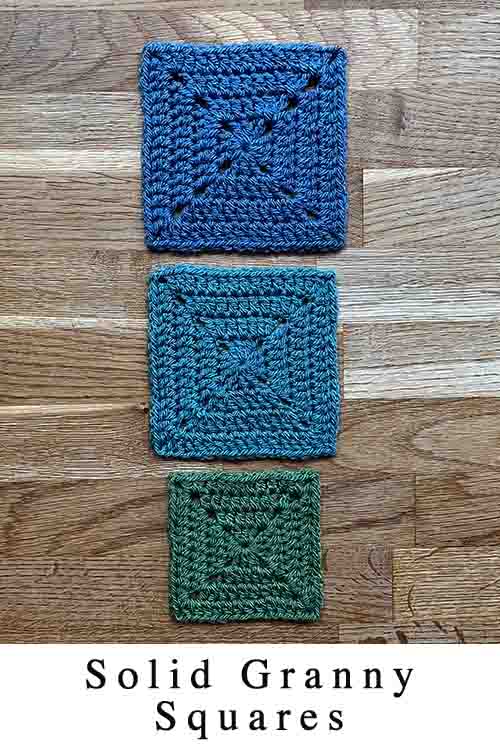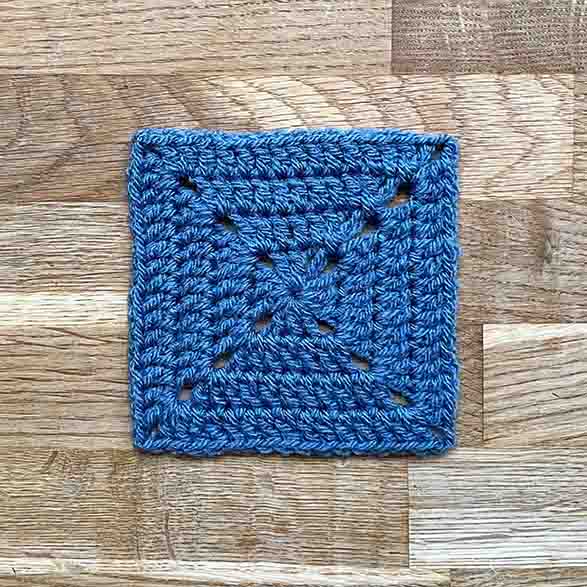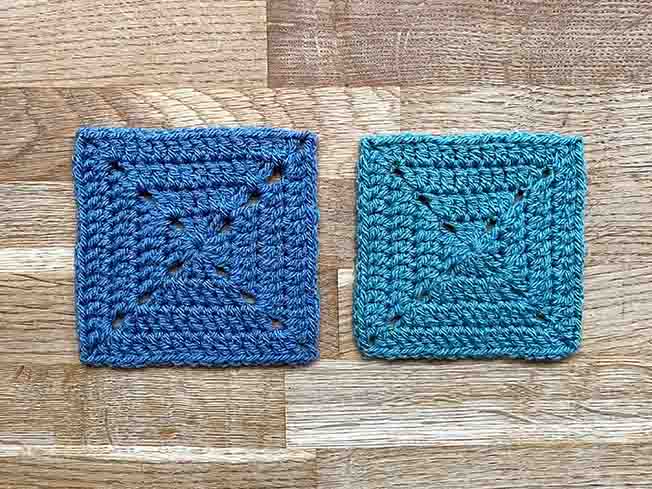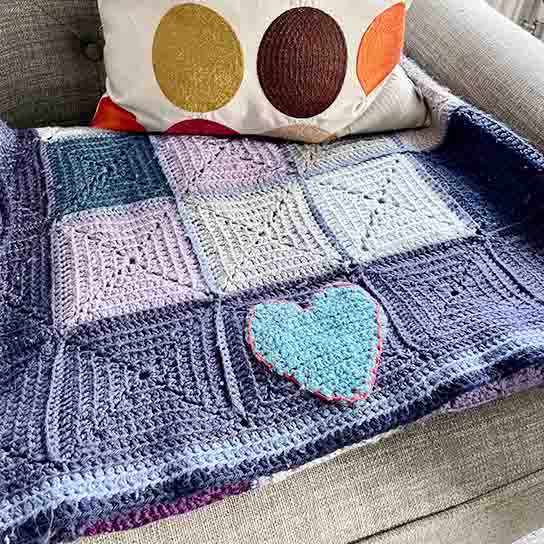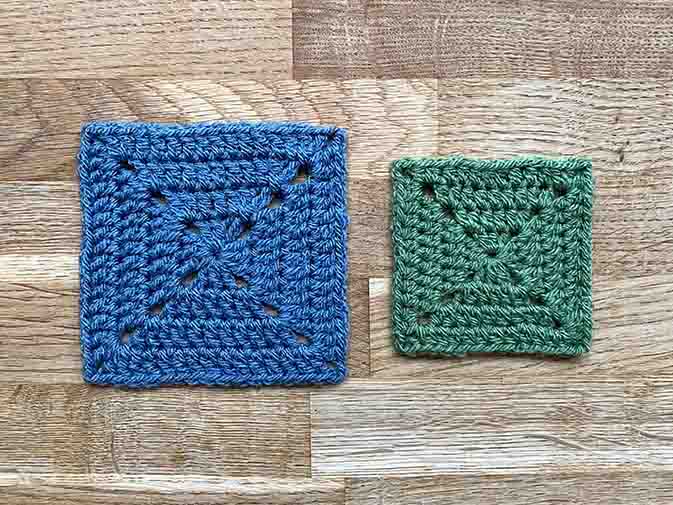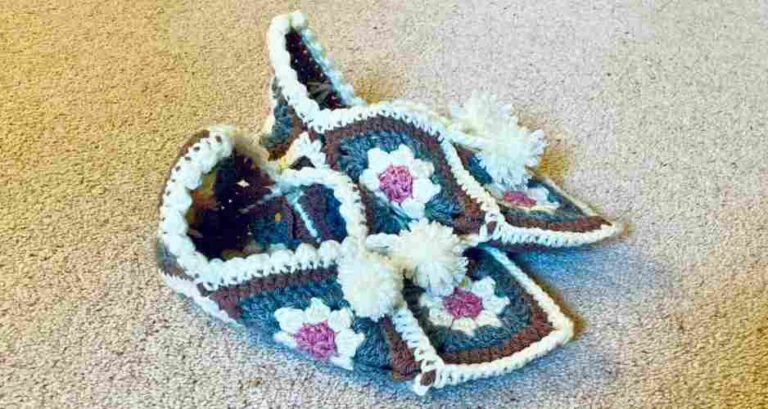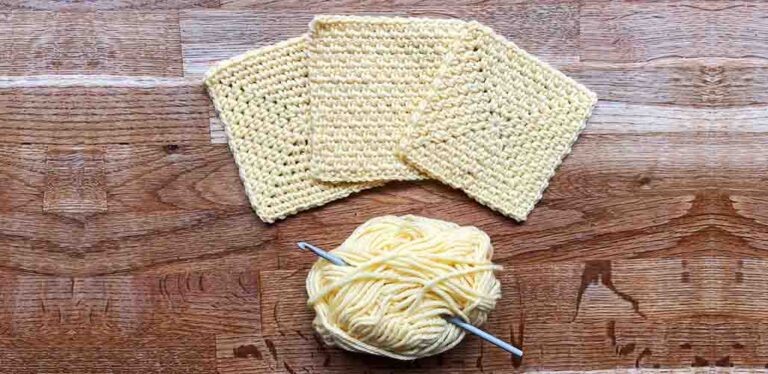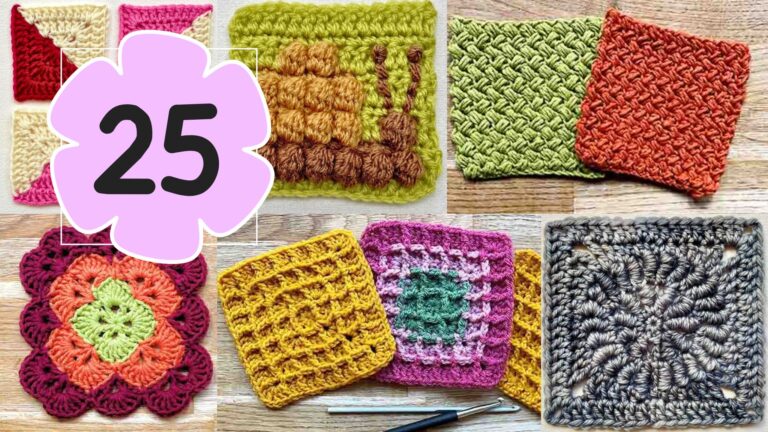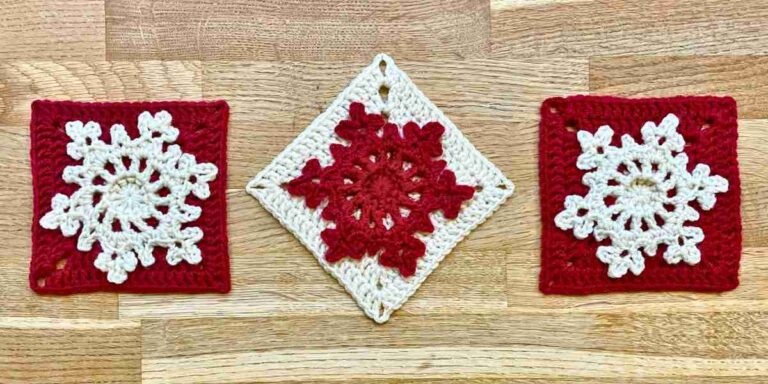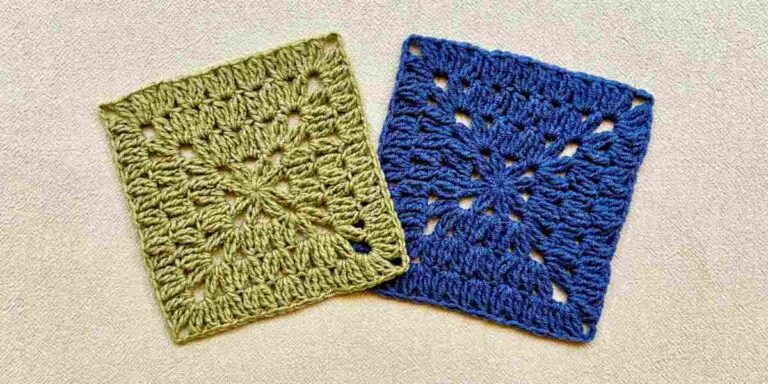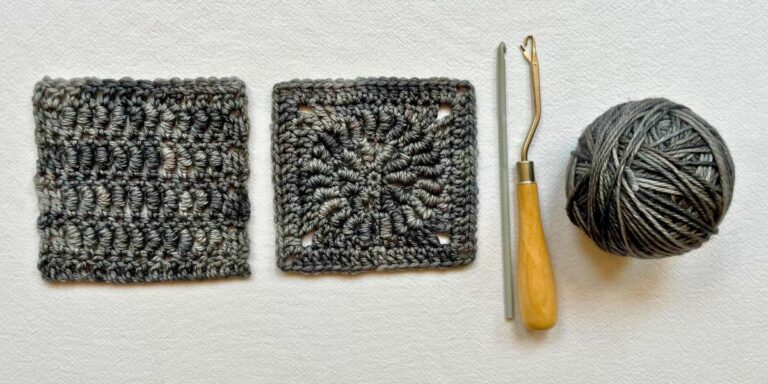Solid Granny Square

A solid granny square is a classic and time-honored choice for blankets, cardigans and scarves. Being relatively free from gaps between the stitches, it’s pretty much perfect for anything where warmth or dense coverage is a priority. Solid granny squares are also a reliable favorite for fancy color work, because you can carry one color inside the stitches of another, without cutting the yarn and creating lots of ends to weave in. Best of all, solid grannies are quick and easy to make. So they’re suitable for both beginners, and more experienced crocheters looking for a satisfying project that doesn’t demand too much concentration.
- How to make a simple solid granny square
- Two ways to handle corners
- Half double crochet grannies
- More gap-free stitches for making granny squares
Why choose a solid granny square pattern
Solid granny squares are dense and warm. They’re ideal for winter blankets and throws, scarves and cosy cardigans. They’re also a good choice for granny square throw pillow covers, because the case underneath won’t show through much. Solid squares have some practical advantages too. When it comes to making a baby blanket, lots of people try to avoid gappy crochet stitches because babies may get their fingers caught in the holes. And solid squares are the perfect solution.
You can also make cool complex designs like stars in solid granny square patterns, or swap colors back and forth for a diagonal effect!
How to make a simple solid granny square
The classic solid granny square is worked in double crochet (English treble crochet). It’s one of the first things I made when I took up crochet, and it really is one of the most beginner-friendly patterns you can possibly try. Even when you have a bit more experience under your belt, solid granny squares are fabulously meditative and therapeutic. They’re the perfect thing to make in between more complex projects, for a bit of a brain-break. Let them accumulate in a spare tote bag or shoe box, and when it’s full, join them together.
Here’s the pattern:
- Magic circle to start.
- Round 1: Ch 5 (counts as 1 dc and 2 corner chains), *dc 3, ch 2* three times, dc 2, sl st into the 3rd chain to join.
- Round 2: Ch 5, dc 2 into corner space, *dc into the next 3 stitches, (dc 2, ch2 , dc 2) into the next corner space* three times, dc into the next 3 stitches, dc into the final corner space, sl st into the 3rd chain to join.
- Round 3 onwards: Ch 5 , dc 2 into corner space, dc into all stitches along the first side, (dc 2, ch2 , dc 2) into the next corner space, *dc into all stitches along the next side, (dc 2, ch2 , dc 2) into the next corner space* twice, dc along the final side, dc 2 into corner space and join with a slip stitch to the 3rd chain.
Just in case any of those abbreviations were unfamiliar:
- Ch Chain
- Dc Double crochet (English treble crochet)
- Sl st Slip stitch
Two ways to handle corners
The basic solid granny square is already pretty opaque, but it does have diagonal rows of holes running from the center to the corners. They’re created by working the four double crochet into the corner spaces, and you can’t close them completely because those four stitches are need to allow your square to grow! But there is a nifty trick for making the holes more discreet. Rather than making the double crochet stitches into the chain spaces at each corner, make them into the top loops of chain stitches instead. So the corners go:
- Dc 2 into the first chain stitch.
- Ch 2.
- Dc 2 into the second chain stitch.
Here’s how that looks on the right, compared to a classic solid square, on the left:
The difference is subtle, but perceptible. I used this corner technique for the blanket in this photo, and I would say that wiggling a crochet hook into chain stitches rather than aiming through a big ol’ corner space definitely slows your down a bit. But I’m happy with how it turned out, and I haven’t ruled out using it again!
Half double crochet grannies
Another alternative to the classic double crochet solid square is a half double crochet (hdc) granny square. This stitch is even denser and squashier than double crochet, for luxuriously plush crochet squares.
Since half double crochet stitches are shorter and wider than double crochet stitches, there’s one important difference in this pattern: you’ll be skipping the first stitch on each side of the square. If you try to fit an hdc into every stitch on every side, the outline of your square will end up distorted and won’t sit flat.
- Magic circle to start.
- Round 1: Ch 4, (counts as 1 hdc and 2 corner chains), *hdc 3, ch 2* three times, hdc 2, sl st into the 2nd chain to join.
- Round 2: Ch 4, hdc 2 into corner space, skip the top of the first stitch on the next side, and hdc into the remaining 2, *(hdc 2, ch 2, hdc 2) into the corner space, skip the top of the first stitch on the next side, and hdc into the remaining 2* three times, hdc into corner space and slip stitch into the 2nd chain to join.
- Round 3 onwards: Ch 4, hdc into the corner space, skip the top of the first stitch on the next side, and hdc into the remaining stitches, *(hdc 2, ch 2, hdc 2) into the corner space, skip the top of the first stitch on the next side, and hdc into the remaining stitches* three times, hdc into corner space and slip stitch into the 2nd chain to join.
Here’s how a solid half double crochet square with four rounds (on the right) compares to a traditional solid granny square made with four rounds of double crochet (on the left). As you can see the hdc square is significantly smaller, so you’ll have to work for longer to cover the same surface area. But for a really special project that you want to feel luxurious, substantial and hard wearing, I think it’s worth it.
Incorporating more than one color
One of the most popular uses for solid granny squares is making two-tone squares with a diagonal divide. These can then be joined in beautiful and timeless Navajo star patterns. This video contains a clear step-by-step tutorial for carrying two colors of yarn in a solid square:
More gap-free stitches for making granny squares
The three patterns in this article are all takes on a simple, flat, solid granny square. But there are more flamboyant ways to make opaque squares with minimal gaps between the stitches. Here are five solid stitches that lend themselves to making dense granny squares with great insulating properties:
- Linen stitch (a.k.a. moss stitch)
- Bean stitch and its little cousin Mini Bean stitch
- Waffle stitch
- Bobble stitch
- Star stitch
Summary
Solid granny squares make the warmest blankets. And since they’re relatively free from holes, they don’t tend to snag on things. They’re very simple to make, but nonetheless impressively versatile. I think if I could only ever use solid granny squares again, it would be a long time before I got bored or ran out of uses for them! Let us know what project you have in mind using the comments box down below. Happy making!
